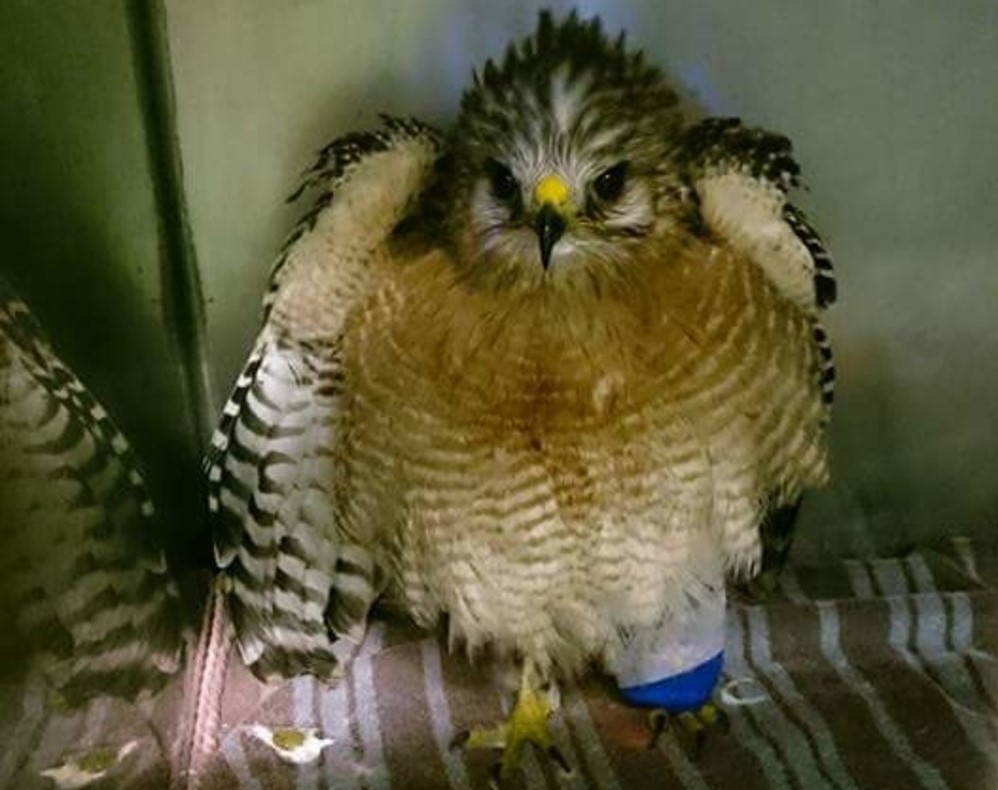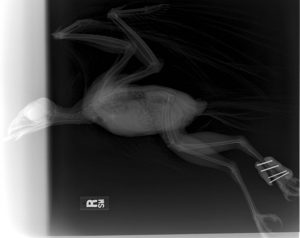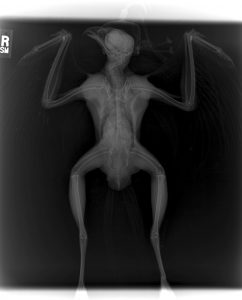
Here at the Falcon Bachelor Bird of Prey Center, which is part of the Batchelor Wildlife Center at our former location in Coconut Grove, we see a lot of raptors with broken bones, but rarely do we see fractures as severe as the case we received on Thursday December 10.
During the late afternoon, some good Samaritans brought in a mature red-shouldered hawk that was unusually calm. If you know anything about this particular species, you know calm is not in their nature, so we immediately suspected something was wrong.
When we examined the bird we found it to have a shattered left tarsometatarsus, which is equivalent to the bone below the ankle in humans. The bone was not only broken, but it had pierced through the skin, leaving the bone exposed to the elements.
We usually have no idea how birds get hurt, we only see the results, but this case was unique. This red-shouldered hawk was found in the wheel well of a Traeger Brothers company vehicle. Without hesitation the employees secured the bird and rushed it to our wildlife hospital. Their quick actions helped save this hawk’s life! Within an hour of the initial injury, the wound was thoroughly cleaned and the bird was given medications to help ease the pain and stop any possible infection from spreading.
The very next day the hawk went into surgery. With the bird under anesthesia, our vet applied an external fixation to the leg, which involved placing pins into the leg perpendicular to the bone. This practice is common in cases where the break is asymmetrical or shattered, because it helps hold the bones in place and allows them to heal in their natural positions. Within a few days the surgery proved to be successful. The once calm red-shouldered hawk was now showing its feisty true nature—even with the pins still in place it began using that leg as its main defense against the staff. Every time we grabbed that hawk we got a constant reminder of the wild animal it truly was.
Over the course of four weeks we closely monitored the leg with X-rays, and as segments of the bone began to heal we removed the pins, with the last pin removed on January 7. The hawk, after being immobile for a month, needed time to gain its strength back, so we placed it in an outdoor enclosure, where it could build muscle and learn to fly again. Part of the physical therapy process involved the staff members “chasing” the bird around at a gentle pace to help it build up its flight muscles. Flight conditioning also allows the staff to monitor the bird’s ability to fly, soar, turn and land.
The final test for this hawk was live prey testing. Live mice were placed inside the flight cage, and we observed to see if the hawk could hunt and kill prey using its previously injured leg. Within minutes the mice were gone and the red-shouldered hawk was in the water cleaning its beak. On Monday, February 22, our vet cleared the hawk for release.
After being in rehab for 10 weeks, it was time to say goodbye to our feathered friend. Today, the red-shouldered hawk was released from our facility in Coconut Grove. A release in this location gives the bird choices as to where it would like to go. It can head to leafy Miami suburbs, the shores of Key Biscayne, or the lush hardwood hammocks of Matheson State Park. Wherever this red-shouldered hawk decides to go, we wish it the best, and safe travels! The work we do today lays the groundwork for our new bigger and better Batchelor Environmental Center, which will open next year.


